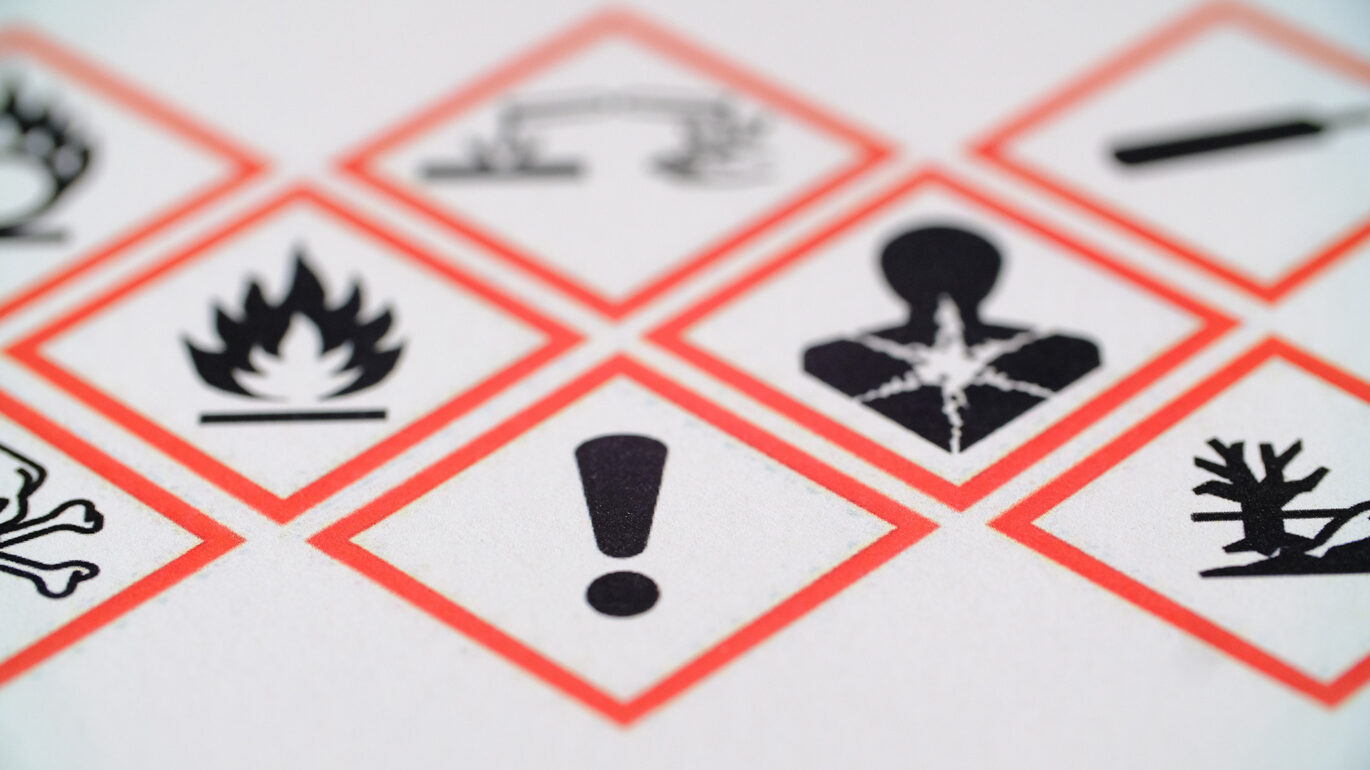Employers are responsible for providing workplace-specific WHMIS training. Elizabeth Lofthouse, a Senior Consultant with WSPS, explains exactly what that means.
When we think about WHMIS—the Workplace Hazardous Material Information System—what probably comes to mind are those universal symbols that illustrate the harm chemicals can do to us. We may associate WHMIS with the training we’ve done numerous times over the course of our working lives. WHMIS is used in all workplace settings across all sectors, which makes the training one of the most common health and safety training courses in Canada. Most workers know what WHMIS is, are familiar with the labels and symbols, and can tell you when they last completed training. These are all good things; however, the gap that many health and safety professionals see is with the workplace-specific component of WHMIS training.
“The reason we do WHMIS training is to make sure workers are protected from the health impact of the chemicals they use at work,” says Elizabeth Lofthouse, a Senior Health and Safety Consultant with WSPS. “This cannot be accomplished if workers don’t know the specific chemicals they will encounter and how they will interact with them.” This is precisely why the workplace-specific component of WHMIS is required. A generic WHMIS course on its own is not enough.
“The potential health impact of working with a specific chemical is a hazard and employers are required to communicate hazards to their employees,” reminds Elizabeth. “Generic WHMIS training gives employees the tools to interpret the product labels and safety data sheets, but it doesn’t provide them with the specific information employees need to work safely.” Elizabeth outlines three questions that your workplace-specific WHMIS training should cover:
1) What will the chemical do to me if I’m exposed?
2) What can I do to avoid exposure?
3) What steps do I take if I have been exposed?
Here are some tips to help you answer those questions for your employees as you develop your workplace-specific WHMIS training program.
1) Read Safety Data Sheets
Most of the information that Elizabeth recommends including in your workplace-specific WHMIS training can be found in the Safety Data Sheets. “Most employers have the applicable safety data sheets available in their workplace, but often they haven’t read through them in detail,” says Elizabeth. She explains that it is the employer’s responsibility to review and interpret the information on the safety data sheets, and then communicate that information to employees through training. “The safety data sheets should really drive the workplace-specific WHMIS training.”
2) Explain Chemical-Specific Risks and Control Measures
Elizabeth emphasizes that employers need to do more than simply tell employees the chemicals they will use on the job. They also need to clearly communicate the specific risks to their health and the controls that are in place to protect them from those health risks. When dealing with chemical exposure, common controls are general and local ventilation, process engineering measures, and use of personal protective equipment. “When workers are aware of the hazards and aware of the control measures, then it is much less likely they will experience occupational exposures to the degree that will harm them,” explains Elizabeth.
3) Review Emergency Response Measures
Elizabeth goes on to discuss the importance of including emergency response measures in your workplace-specific WHMIS training. “Even with effective controls in place, sometimes something goes wrong. In those cases, it’s important for workers to know what the emergency response plan is and what steps to take,” says Elizabeth. For example, workers need to understand what type of first aid to apply if exposure occurs. What should a worker do if they get the chemical in their eyes, on their skin, or on their clothes? If the chemical ends up in their eyes, do they know where the eye wash station or emergency showers are located within the facility? Another example is a chemical spill. Workers need to know the procedure for how to safely clean it up.
4) Consider Updating Training Material and Retraining
The legislation does not state that WHMIS training must be repeated annually. It requires that the employer, in consultation with the Joint Health and Safety Committee or Health and Safety Representative, consider whether or not retraining is necessary. “The employer needs to determine if workers have the answers to those three key questions we outlined earlier. If your employees can’t answer those questions, then a repeat of training is likely required,” says Elizabeth. An employer may evaluate the level of knowledge their employees have about the chemicals they are using by having them complete a brief quiz or asking them questions during safety meetings. When evaluating the effectiveness of your WHMIS training, consider the content of your program and the delivery method as well. Repeating training that was ineffective doesn’t make sense from a business or safety perspective.
How WSPS Can Help
Consulting
Connect with a WSPS consultant for assistance with hazard identification and assessment.
Training
WHMIS 2015 (online, 1 hour)
WHMIS 2015 Train the Trainer (classroom, 1 day)
WHMIS 2015 Self-Paced for Workers (USB)
Managing Hazards and Risks (classroom, 3.5 hours)
Resources
What you need to know about hazardous chemicals in the workplace (article)
How can an employee work with a designated substance safely (video)



